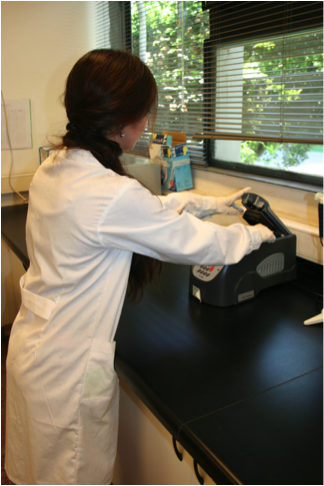
Felicitaciones a Javiera Anguita por su trabajo titulado “A New Electrochemically Active Arsenic Oxidising Bacterium Ancylobacter sp. TS-1”. Sin duda otro gran avance del grupo en la caracterización de este microorganismo descubierto en nuestro lab.
Título: “A New Electrochemically Active Arsenic Oxidising Bacterium Ancylobacter sp. TS-1”
Autores: Javiera Anguita Mario Vera Ignacio T Vargas
DOI: http://dx.doi.org/10.1002/celc.201800943.
Autores: Javiera Anguita Mario Vera Ignacio T Vargas
DOI: http://dx.doi.org/10.1002/celc.201800943.
Revista: ChemElectroChem (Q1 / IF: 4.446)
Abstract
The study of electrochemically active microorganisms (EAMs) has revealed the metabolic versatility of chemolithoautotrophic microorganisms in bioelectrochemical systems (BESs). However, direct electron uptake from electrodes to support bacterial growth has been suggested only for the iron oxidiser Mariprofundus ferrooxydans, the sulfur oxidiser bacterium Thiobacillus denitrificans and the iron/sulfur oxidiser Acidithiobacillus ferrooxidans. To the best of our knowledge, chemolithoautotrophic arsenite oxidisers (CAOs) have not been reported as biocathodic EAM. This paper studies the electrochemical activity of Ancylobacter sp. TS‐1, a new CAO. The electrochemical capacity of TS‐1 was evidenced by linear sweep voltammetry tests, revealing a peak of cathodic current dependent on biomass concentration at ‐500 mV (vs. Ag/AgCl, at pH 7.2); and by chronoamperometry, showing an increase in the cathodic current over time. Cathodic currents obtained for TS‐1 (9.5 ± 2.4 µA/cm2) are comparable with values previously reported for A. ferrooxidans (~27 µA/cm2) and M. ferrooxydans (~8 µA/cm2). Scanning electron micrographs show TS‐1 cells on electrodes during the chronoamperometry, suggesting biofilm development of strain TS‐1 when using the cathode only as an electron donor. Hence, TS‐1 not only enlarges the list of known biocathodic EAMs, but also paves the way for novel BES applications on arsenic electro‐bioaugmentation and bioremediation.
IV
